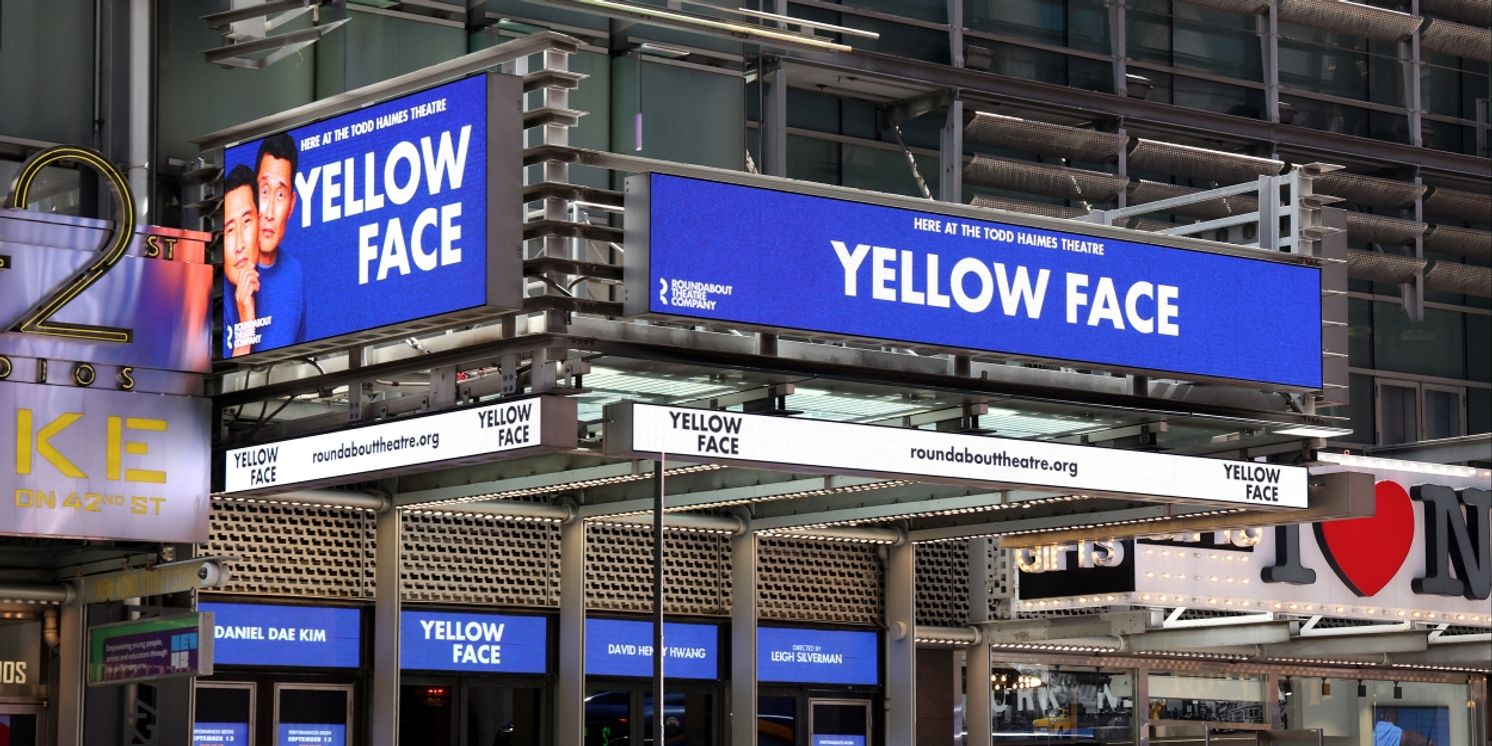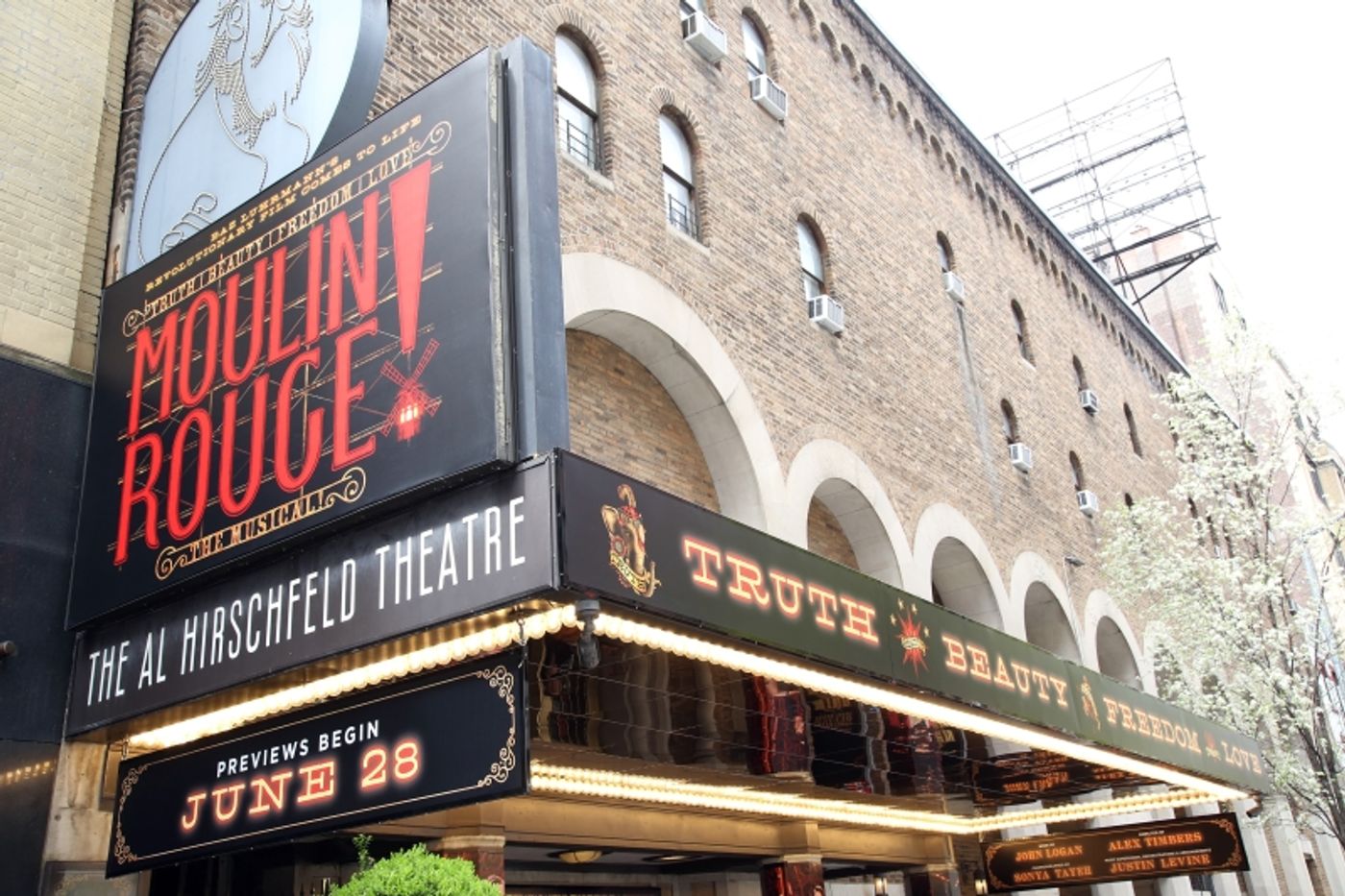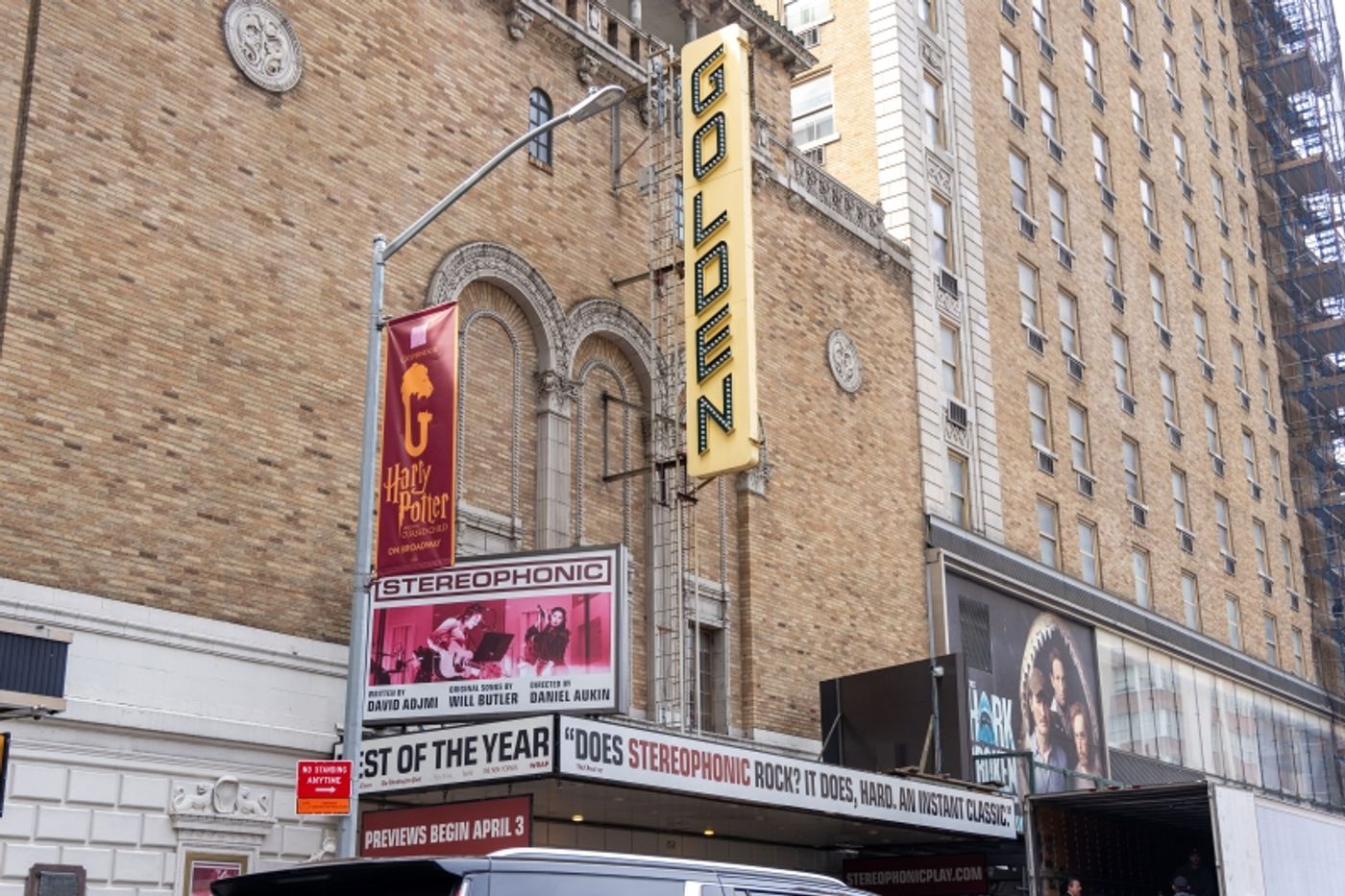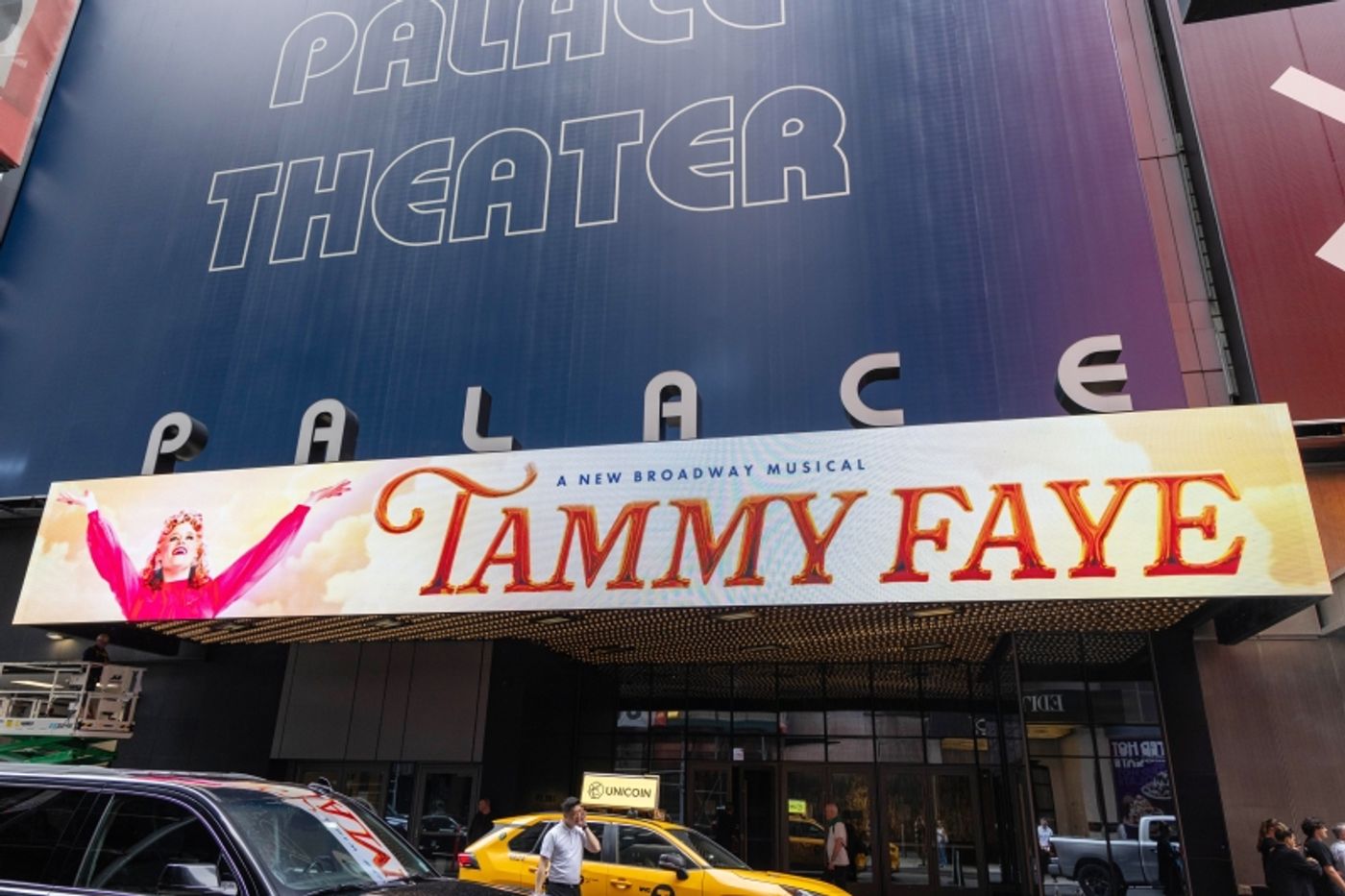How Often Do Broadway Theatre Names Change?
Jennifer Ashley Tepper Is answering your questions with Broadway Deep Dive!

Do you have a burning Broadway question? Dying to know more about an obscure Broadway fact? Broadway historian and self-proclaimed theatre nerd Jennifer Ashley Tepper is here to help with her new series, Broadway Deep Dive. Every month, BroadwayWorld will be accepting questions from theatre fans like you. If you're lucky, your question might be selected as the topic of her next column!
Submit your Broadway question in the comments here!
This time, the reader question was: How often do Broadway theatre names change?
Of our 41 currently operating Broadway theaters, 15 boast the same names they opened with, which have never changed. The Booth, Broadhurst, Circle in the Square, Ethel Barrymore, Hudson, Imperial, Longacre, Majestic, Marquis, Minskoff, Music Box, New Amsterdam, Palace, Shubert, and Vivian Beaumont are stalwarts on Broadway, persisting with their same names throughout their entire histories as Broadway houses.
Honorable mention in this regard can be bestowed upon the Ambassador, Lyceum and Winter Garden. The Ambassador, current home of Chicago, was briefly renamed the New Ambassador after a 1980 renovation, before returning to its original 1921 name which it has held ever since. Similarly, the Lyceum, current home of Oh, Mary!, originally opened in 1903 as the New Lyceum, as it was meant to replace a different Lyceum Theatre further downtown, but transitioned to being called just the Lyceum later that same year. The Winter Garden was briefly renamed the Cadillac Winter Garden from 2002-2007 during a sponsorship from the auto company, but has been simply the Winter Garden for the entirety of its 113-year history otherwise.
Broadway theaters are named at the behest of their owners and operators. They are often named to honor a notable figure in theatre (August Wilson, Richard Rodgers), to invoke a classic theatre term or brand (Lyric, St. James), or based on donor or sponsor contributions (Samuel J. Friedman, Vivian Beaumont).

Name changes for Broadway theaters are not frequently made; An average of five name changes have happened in each decade for the past two. In the 2000s, there were six total Broadway theater name changes. The Martin Beck became the Al Hirschfeld, renamed for the beloved artist and chronicler of Broadway history, in 2003. It currently houses Moulin Rouge!. The Virginia, which had also had names including the ANTA and the Guild Theatre since opening in 1925, became the August Wilson, after the important dramatist, and is currently home to the newest Cabaret revival. The Royale and Plymouth, jewels of The Shubert Organization, became the Jacobs and Schoenfeld, respectively, renamed for the two men who led The Shubert Organization for a significant period of the 20th century, in 2005. The adjacent theaters are now presenting two of last season’s new musicals, The Outsiders and The Notebook. The Ford Center for the Performing Arts originally opened in 1998, and was a new house built on the site of two former Broadway theaters, the Lyric and the Apollo, utilizing some of their elements. It was renamed the Hilton in 2005 while sponsored by the hotel chain, and these days contains Harry Potter and the Cursed Child. And finally, the Biltmore, which had held its same name since opening in 1925, was renamed the Samuel J. Friedman after the Broadway publicist whose family were major donors to MTC, non-profit operators of the house which presents their Broadway season.
The 2010s saw four Broadway theaters change names. Broadway’s smallest house, known as the Helen Hayes since 1983 after the other Helen Hayes Theatre was demolished, adjusted its name to be just the Hayes and is now operated by Second Stage Theater. The Ford Center-turned-Hilton became the Foxwoods in 2010, renamed for the Foxwoods casino as part of a sponsorship by Live Nation, and then became the Lyric in 2014; this was an extraordinary number of name changes for a Broadway house in a short period of time. The Henry Miller’s Theatre became the Stephen Sondheim in 2010, renamed for the great composer-lyricist, with & Juliet now playing on its stage.

So far during this decade, Broadway has seen three theater name changes. The Cort, holding the same name since opening in 1912, became the James Earl Jones in 2022, renamed after the legendary actor. The new play Left on Tenth will open there this fall. The Brooks Atkinson, named as such since 1960 became the Lena Horne in 2022, renamed after the iconic singer; the Six queens are currently doing her proud on that stage. These two name changes honored artists of color who have made a significant mark on the arts, and were seen as part of an industry-wide movement for equity in all-things theatre. In 2023, Roundabout’s American Airlines Theatre, one of the houses that presents that non-profit’s Broadway season, was renamed the Todd Haimes after the late visionary artistic director who led Roundabout for 40 years.
That leaves us with 12 remaining Broadway houses, which have altered their names since originally opening, but not since the last century. The Belasco is named for the eccentric producer who opened the theater in 1907, although it was called the Stuyvesant for its first three years of operation; the new musical Maybe Happy Ending will be its next tenant. The Broadway, now hosting The Great Gatsby, has had a large array of names in its 100-year history, several of which did include its core name (B.S. Moss’s Broadway Theatre, Earl Carroll’s Broadway Theatre). The Eugene O’Neill, home of The Book of Mormon, was renamed as such in 1959, after the playwright of several landmark works. (Funnily enough, the blockbuster playwright Neil Simon owned the Eugene O’Neill for a time—not to be confused with Broadway’s Neil Simon Theatre, which he never owned.)
The Gershwin, home of the long-running Wicked, was originally named the Uris. (Its first tenant was originally titled Up!, but the producers of that show retitled it Via Galactica, because they didn’t want the marquee to read “Up! Uris”.) The Uris was originally named for the Uris Buildings Corporation who erected the house. It was renamed the Gershwin in 1983 after brothers Ira Gershwin and George Gershwin in honor of their contributions to Broadway and the Great American Songbook, at the behest of The Nederlander Organization who operate the theater.

The John Golden, where Stereophonic is playing, was called the Theatre Masque for its first ten years of operation starting in 1927, before being taken over by producer Golden. The Lunt-Fontanne, named after the exemplary acting duo, was The Globe Theatre from 1910 to 1957, and will soon be lit up by Death Becomes Her. The Nederlander Theatre, owned and operated by The Nederlander Organization, received its current name in 1980 and will have Redwood as its next production in 2025. The Neil Simon where MJ The Musical is playing was the Alvin from 1927 to 1983; its original name was in honor of two producers, Alex Aarons and Vinton Freedley, and created by combining their names. Hamilton’s Richard Rodgers Theatre was the 46th Street Theatre until 1990 when it was honored with the name of one of Broadway’s premiere composers. The St. James was the Erlanger, for the theater owner and operator, from opening in 1927 until 1932, and then became the St. James, where Sunset Boulevard will start this fall. Studio 54 has held many names during its 97-year history, and is currently named after the iconic discotheque that it was home to from 1977 to 1989; A Wonderful World: The Louis Armstrong Musical will begin performances there soon. The Walter Kerr, where Hadestown is playing, is Broadway’s only current theatre named after a critic (who was also a dramatist), although it was known as the Ritz for a majority of its life, until 1990.
Of the 15 Broadway houses that possess their original names, five are named for theatre luminaries. The Booth (upcoming The Roommate) is named for acclaimed 19th century actor Edwin Booth, brother of John Wilkes Booth. The Ethel Barrymore (upcoming Our Town) is named for the great actor, who is also the great-aunt of Drew Barrymore. The Broadhurst, which will next host the new play The Hills of California, is named after theatre multi-hyphenate George Broadhurst. The Shubert, home of Hell’s Kitchen, is often considered the crown jewel of The Shubert Organization, and is named after Sam Shubert, one of the three brothers who founded the company, who died tragically at age 26. Lincoln Center’s Vivian Beaumont Theatre is one of the two-and-a-half theaters currently named for women, also including the Barrymore and half of the Lunt-Fontanne (but not the Hayes, since its no longer explicitly named for Helen Hayes). Vivian Beaumont was an actor and philanthropist who funded the construction of the theater which hosts Lincoln Center’s Broadway season, including the upcoming McNeal.

The Hudson (Once Upon a Mattress), Imperial (Water for Elephants), Longacre (upcoming Swept Away), Majestic (upcoming Gypsy), Music Box (Suffs), New Amsterdam (Aladdin), and Palace (upcoming Tammy Faye) are all named after archetypal theatre or New York terms, from the Longacre, after the original name of the area, Longacre Square, before it was Times Square, to the Palace, a favored name for theater houses around the globe for many years.
The Minskoff, one of Broadway’s youngest theaters, built in 1973, is named for the real estate developers who built the space, Sam Minskoff and Sons, and is currently home of The Lion King. Circle in the Square, where Romeo & Juliet will begin soon, is named after the theater company who originally occupied the space after moving from downtown. And finally, the Marquis, where Stranger Things: The First Shadow will soon play, is named for the Marriott Marquis, the hotel that the theater resides in.
Comments
Videos

